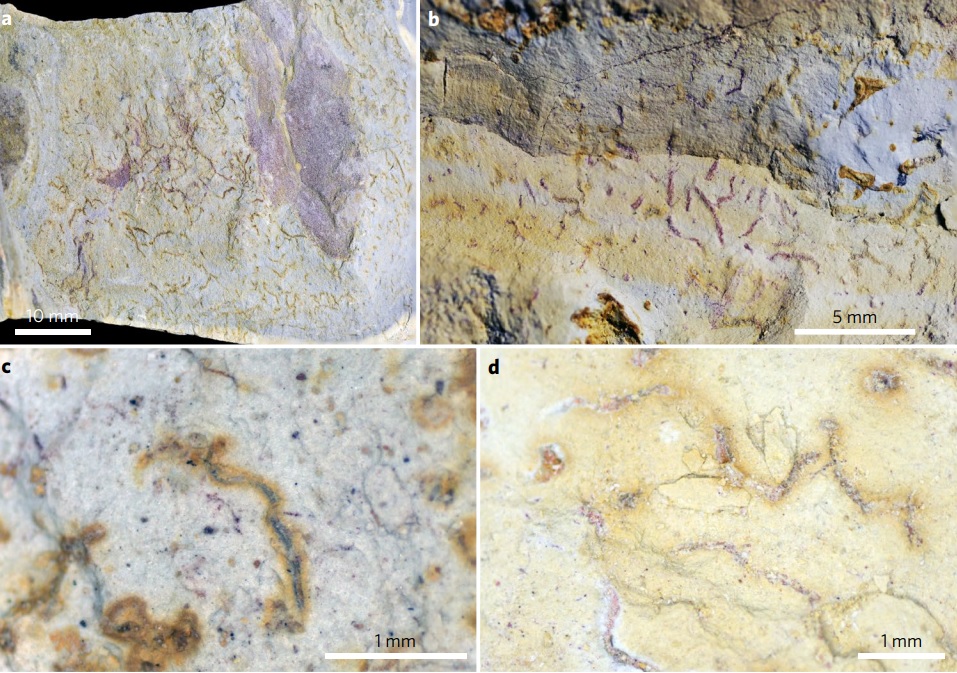
Meiofaunal trace fossils from Ediacaran-Cambrian era siltstones in Brazil (Image via Parry et al.)
According to the fossil records, nearly all animal phyla appeared within a relatively short timespan, dubbed the Cambrian Explosion due to its brevity and significance. But a recent study is contributing to another narrative, one that suggests the “explosion” wasn’t as sudden as scientists first thought, and that favourable circumstances had been lining up since the preceding Ediacaran era. A new study describes a collection of trace meiofaunal fossils—organisms smaller than macrofauna but bigger than microfauna—from Ediacaran-Cambrian siltstones in Brazil, with the oldest specimens dating back 555–542 million years. Brand new technology allowed the researchers to reconstruct important morphological details of the meiofauna that formed the fossil burrows and even posit theories about their movement patterns. The fossils present the earliest evidence of tiny lifeforms called meiofaunal bilaterians—which, despite their size, play a significant role in bioengineering behaviours that play an important role in early diversification of life and modern marine ecosystems.
Authors:
Luke A. Parry, Paulo C. Boggiani, Daniel J. Condon, Russell J. Garwood, Juliana de M. Leme, Duncan McIlroy, Martin D. Brasier, Ricardo Trindade, Ginaldo A. C. Campanha, Mírian L. A. F. Pacheco, Cleber Q. C. Diniz & Alexander G. Liu
Corresponding Canadian author:
Luke Parry, Royal Ontario Museum, Toronto, ON, Email: lparry@rom.on.ca
Original paper published on September 11, 2017 in Nature Ecology & Evolution.
